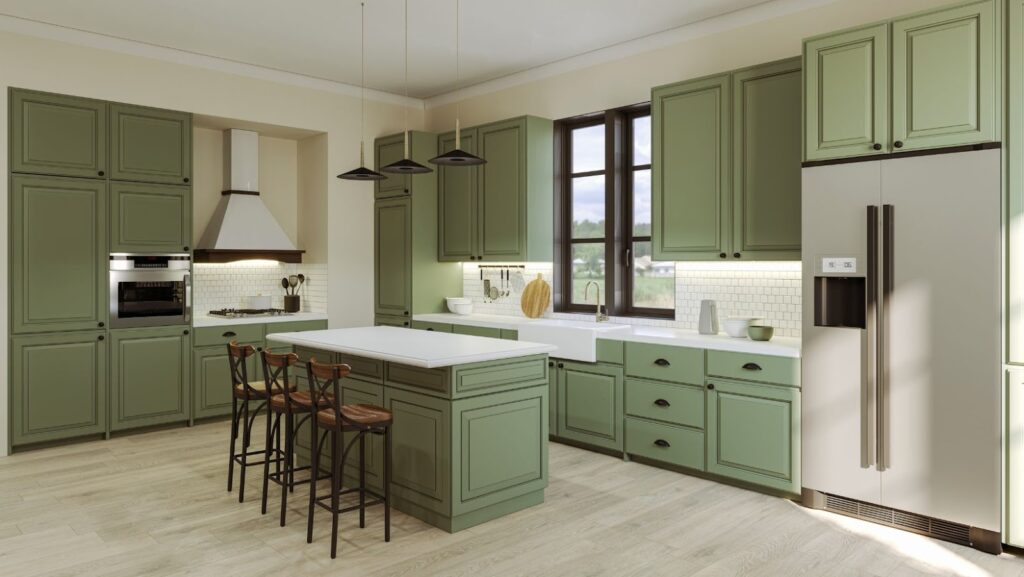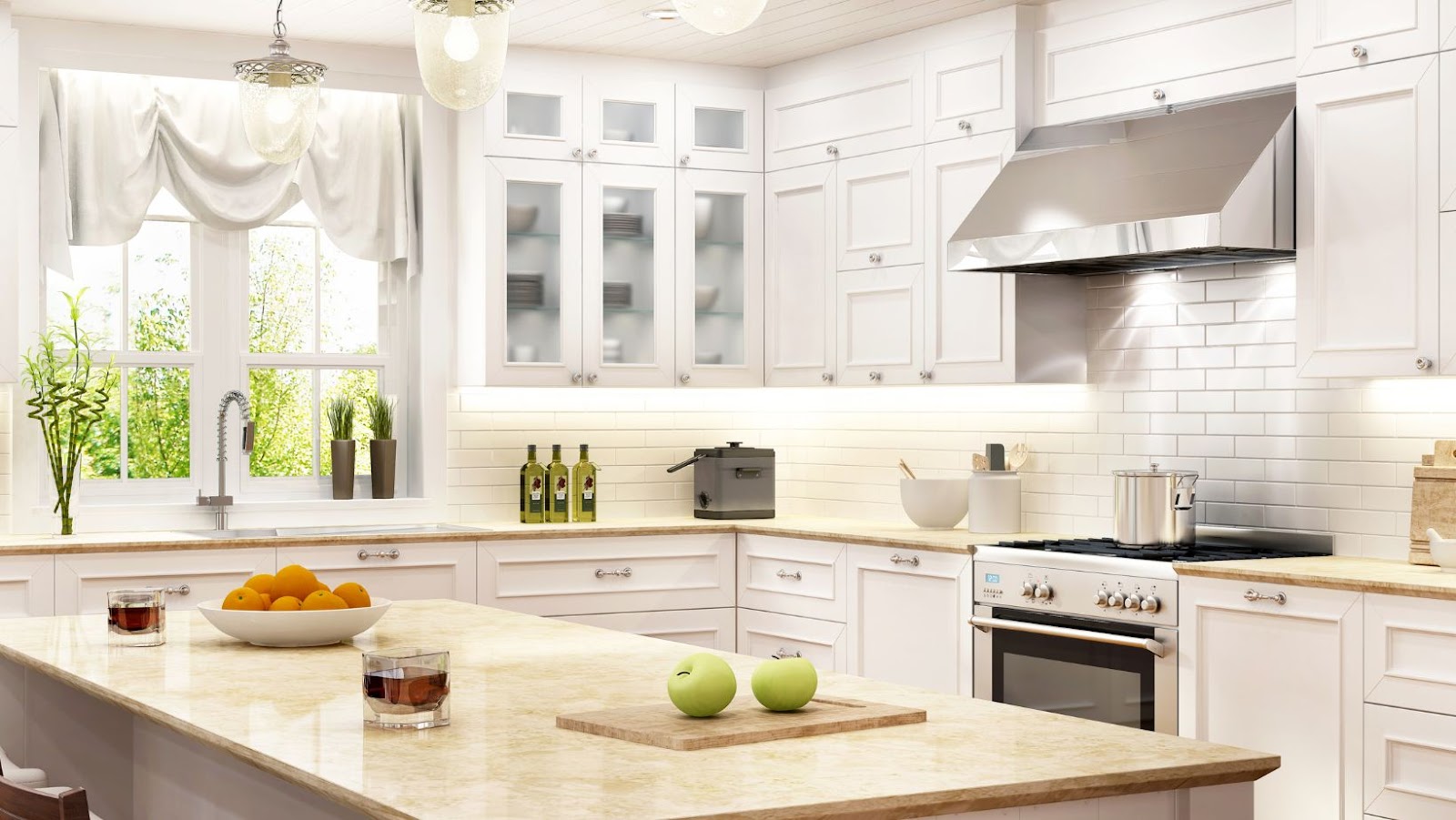The Disadvantages of a Kitchen Peninsula & Kitchen Island

A kitchen peninsula is a great way to add extra counter space and storage to a kitchen, but there are some downsides associated with this style of kitchen island. For starters, kitchen peninsulas can be more difficult to access than a kitchen island, as they lack the surrounding walkway. Additionally, they limit the space in the kitchen, meaning that you may be unable to put in more large appliances like an oven or refrigerator. Lastly, they may not offer the same level of storage, counter space, and seating options as a kitchen island does.
Kitchen Peninsula vs Island
Limited storage space is one of the main drawbacks of having a kitchen peninsula instead of a kitchen island. While a kitchen peninsula can provide additional counter space and seating, it often lacks sufficient storage options compared to a kitchen island. This can be particularly problematic if you have a small kitchen and limited cabinets or pantry space.
Additionally, a kitchen peninsula can make it difficult to navigate the kitchen efficiently, particularly if you have a lot of foot traffic in the area.
On the other hand, a kitchen island offers more storage options, including cabinets, drawers, and shelves, and can provide additional workspace for food preparation and cooking. It can also be a great spot for casual dining and entertaining.
Ultimately, the choice between a kitchen peninsula and an island depends on your specific needs, kitchen layout, and personal preferences.
Not Ideal for Large Kitchen Spaces
While kitchen peninsulas and islands can enhance the functionality and design of a kitchen, they may not be ideal for larger kitchen spaces. A kitchen peninsula is a permanent extension of the kitchen counter that is attached to a wall or cabinets at one end. A kitchen island is a standalone counter, usually located in the middle of the kitchen.
The downsides of a kitchen peninsula include:
1. Limited Space: A kitchen peninsula reduces the space for movement in the kitchen and can make it feel cramped.
2. Lack of Flexibility: A kitchen peninsula is not as flexible as a kitchen island since it remains in one place.
3. Reduced Storage: A kitchen peninsula may not offer as much storage space as kitchen cabinets.
4. Reduced Seating: A kitchen peninsula can only accommodate seating on one side, limiting the number of people who can sit and dine.
Overall, while kitchen peninsulas and islands can be functional and enhance the aesthetics of a kitchen, it’s essential to consider the kitchen’s size and layout before deciding on the type to use.
Limited Seating Capacity
One of the major downsides of having a kitchen peninsula or island in your home is that its seating capacity is limited by its design and size, which may not be enough for big families or large gatherings.
While a kitchen peninsula or island can provide additional counter space and storage, it can also take up a lot of space in your kitchen, making it feel cramped and cluttered.
Furthermore, a kitchen peninsula or island requires a significant investment of time and money to install and may not be suitable for all kitchen layouts, especially in smaller homes where space is limited.
To ensure that a kitchen peninsula or island is the right choice for your home, consider factors such as the size of your kitchen, your cooking and entertaining needs, and your budget.
The Disadvantages of a Kitchen Island
While a kitchen island can provide additional counter space, storage, and seating, it can also come with some drawbacks.
From the layout of your kitchen to the cost of a kitchen island, there are a few considerations to keep in mind when deciding whether or not a kitchen island is right for your home.
In this article, we’ll cover the disadvantages of a kitchen island and compare them to the advantages of a kitchen peninsula so you can make the best decision for your kitchen.
May Take Up Too Much Space
While kitchen islands are popular for providing additional storage and countertop space, they may take up too much space in smaller kitchens, making them difficult to manoeuvre around.
Additionally, installing a kitchen island can be expensive, especially if you need to reconfigure plumbing or electrical work.

However, there is an alternative to a kitchen island – a kitchen peninsula. A peninsula is similar in design to an island but is connected to a wall, making it a suitable option for those who have limited kitchen space.
The disadvantages of a kitchen peninsula include less storage space than an island and limited seating options.
Ultimately, deciding whether to install a kitchen island or peninsula depends on your kitchen layout, budget, and personal preferences.
Limited Mobility
For those with limited mobility, a kitchen island or peninsula may not be the most practical or comfortable option due to some disadvantages.
A kitchen island is often too tall and too deep for someone who is less mobile or wheelchair-bound to comfortably work at. Furthermore, a narrow walkway between the island and cabinets may also be difficult to navigate.
A kitchen peninsula provides added countertop space and storage, but it can also create a cramped cooking area and impede movement between the kitchen and other rooms. The overhang or seating area can also be a tripping hazard.
In both cases, it may be better to consider an L-shaped kitchen layout with lower countertops and a wide walkway for ease of access and movement.
Pro Tip: Consider installing pull-out shelves and drawers in lower cabinets for easy access to items. Also, incorporating a wall-mounted oven and microwave can help prevent reaching and bending.
May Not Fit the Aesthetic of Your Kitchen Décor
While a kitchen island or peninsula certainly has its advantages, one of the disadvantages to consider is that it may not fit the aesthetic of your kitchen décor.
A kitchen island or peninsula is a large piece of furniture that can dominate the overall look and feel of your kitchen. If you have a small kitchen, a large island or peninsula can make the space feel cramped and cluttered. Additionally, if your kitchen has a specific design theme or style, such as mid-century modern or farmhouse, a large island or peninsula might not match the overall aesthetic of your kitchen.
On the other hand, if you have a large kitchen and want to make a statement piece, a kitchen island or peninsula might be just the thing you need to tie the space together. In this case, you can choose an island or peninsula that complements your existing design theme or create a new one around your island or peninsula.
Choosing Between A Kitchen Peninsula and A Kitchen Island
When deciding on the best kitchen design for your home, one of the biggest decisions you have to make is whether to opt for a kitchen peninsula or a kitchen island. Both of these kitchen designs have their advantages and disadvantages, which should be carefully considered.

In this article, we will evaluate the advantages and disadvantages of a kitchen peninsula and a kitchen island to help you make the best decision for your home.
Size of Your Kitchen
When it comes to choosing between a kitchen peninsula and a kitchen island, one of the most important factors to consider is the size of your kitchen.
A kitchen peninsula is a connected island that juts out from one wall and is open on three sides, whereas a kitchen island is a freestanding unit that can be placed anywhere. While a kitchen peninsula can save space in smaller kitchens, it can also make the room feel cramped and hinder traffic flow. Additionally, it can limit design possibilities since it depends on being attached to a wall.
On the other hand, a kitchen island can provide additional workspace, storage, and seating options, but it requires more floor space and can be an obstruction in smaller kitchens.
Ultimately, the choice between a kitchen peninsula and a kitchen island comes down to the specific needs and constraints of your kitchen space.
Your Cooking Needs
When it comes to your cooking needs, choosing between a kitchen peninsula and a kitchen island can be a difficult decision. However, it’s important to consider the disadvantages of a kitchen peninsula to make an informed choice for your space.
Disadvantages of a kitchen peninsula:
- Limited storage: Kitchen peninsulas tend to offer less storage than kitchen islands, which can be problematic if you have a lot of cookware, small appliances, or pantry items.
- Limited seating: While kitchen peninsulas can provide seating on one side, they typically don’t offer the same amount of seating as kitchen islands, which can be a disadvantage if you entertain frequently.
- Less flexible layout: Kitchen peninsulas are a permanent fixture in your space and can be difficult to reposition or remove if you decide to change your kitchen layout in the future.
Consider these disadvantages carefully before deciding between a kitchen peninsula and a kitchen island for your cooking needs.
Your Hosting and Entertaining Needs
When it comes to hosting and entertaining, having a functional kitchen space is essential. Kitchen peninsulas and islands are two popular options for adding workspace and storage to your kitchen, but which one is right for you?
While kitchen islands offer more counter space and storage options, kitchen peninsulas have some notable disadvantages that may not suit everyone’s needs.
For example:
1. Limited space: Kitchen peninsulas are L-shaped and extend from the existing counter or wall, which can sometimes limit the amount of floor space in your kitchen.
2. No opportunity for seating: Unlike kitchen islands, peninsulas do not offer space for seating or socialising.
3. Traffic flow issues: Because of their shape and location, peninsulas may disrupt the natural traffic flow in your kitchen and make it difficult for people to move around freely.
4. Lack of versatility: Kitchen peninsulas are not as versatile as kitchen islands when it comes to placement, design, and functionality.
Consider the pros and cons of each option when choosing between a kitchen peninsula and island for your hosting and entertaining needs.






